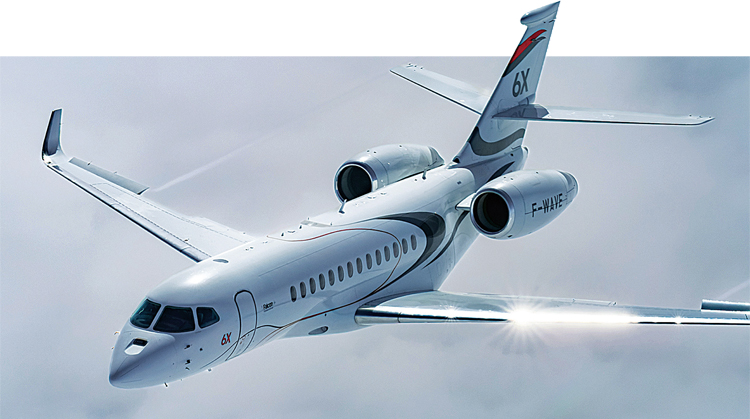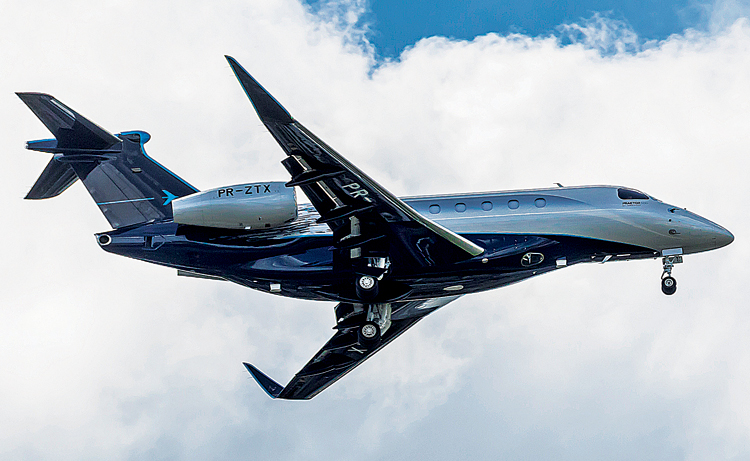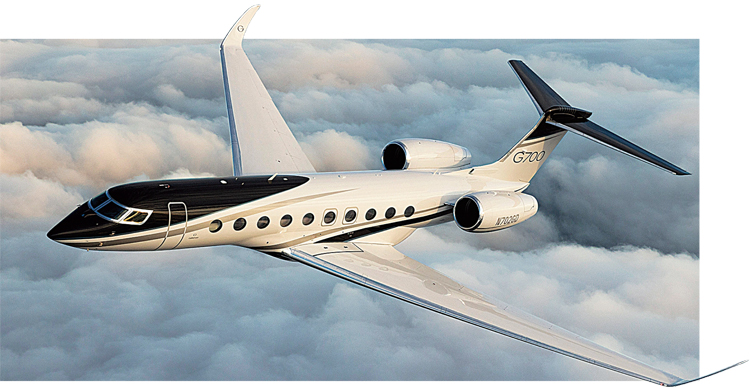INDIAN ARMED FORCES CHIEFS ON
OUR RELENTLESS AND FOCUSED PUBLISHING EFFORTS

SP Guide Publications puts forth a well compiled articulation of issues, pursuits and accomplishments of the Indian Army, over the years

I am confident that SP Guide Publications would continue to inform, inspire and influence.

My compliments to SP Guide Publications for informative and credible reportage on contemporary aerospace issues over the past six decades.
India’s Evolving Business Aviation Landscape
The Business Aviation industry in India has had its share of kinks and hopes but the necessity for the efficient transportation of goods and executives will lead to an increased reliance on private aircraft

The landscape of business aviation has witnessed a significant global evolution, especially in the aftermath of the pandemic, and the Indian Business Aviation sector has been no exception. Over the last decade, the industry in India has undergone substantial metamorphosis, finally garnering the critical recognition it deserves. Its role as a driver of productivity and contributor to economic development is now more apparent. Industry advocates underscore the imperative for a robust framework to propel growth and channelise economic and social benefits throughout India. Despite noteworthy shifts in perspectives, policies, and infrastructure, grappling with persistent financial challenges poses a significant impediment for the business aviation industry to fully realise its potential.
In setting the tone for a comprehensive understanding of each stakeholder’s specific roles in Aviation, Group Captain Rajesh Bali, Managing Director of the Business Aviation Operators Association (BAOA), articulated during the seventh edition of the BizAvIndia conference held in Delhi earlier this year that a collaborative and balanced conversation is essential. He emphasised the need to comprehend each other’s roles effectively and foster more effective collaboration with regulators in the future. Group Captain Bali drew attention to a 2012 study by the International Civil Aviation Organisation (ICAO), which predicted a year-on-year growth rate of 10 per cent for the first decade, followed by rates of seven per cent and an additional five per cent in the last five years, resulting in a total of approximately 4,000 small aircraft. However, he noted that the number of operators has decreased from 137 to 103 since then, only recently rebounding after a period of decline.
A report from Ken Research highlights challenges faced by the business aviation sector, including high operational costs, complex tax structures, and business difficulties. Nevertheless, recent positive growth is attributed to an increased number of High Net Worth Individuals (HNIs) and fleet diversification. Contributing factors such as airport development, regulatory changes, enhanced regional connectivity, industry leaders’ initiatives, growth in the oil sector, and overall economic prosperity have also played a pivotal role in driving demand.

The prevalence of private charters among HNIs, politicians, business executives, and their diverse applications, from oil transportation to air ambulance services, has spurred a market revival. Major companies have responded by diversifying revenue streams, establishing international affiliations, and upgrading their aircraft, fueling market demand. Incremental focus on infrastructure development, expanded company operations, albeit gradual regulatory liberalisations, and government acknowledgment have collectively contributed to a gradual increase in market demand.
The prevalence of private charters among HNIs, politicians, business executives, and their diverse applications, from oil transportation to air ambulance services, has spurred a market revival
Positive initiatives from the Indian government, aimed at attracting foreign investment across various sectors, have resulted in heightened demand for private air travel, particularly from foreign companies in manufacturing, information technology, and services. Further market growth is driven by business aviation companies expanding operations into Tier-II and Tier-III cities across India.
MARKET OVERVIEW
- According to the same report, India’s Business Aviation Market, categorised by revenue stream, includes Aircraft Charter Income, Maintenance, Repair and Operations (MRO) Services, Ground Handling, Aircraft Sales Commission, Hospitality Services (F&B), and Aviation Academy. In the financial year 2022, Aircraft Charter Income dominated with the highest market share, as major players concentrated on charter operations and outsourced related services. MRO claimed the second-highest share, with Mumbai hosting over 80 per cent of the country’s MRO facilities. Ground handling, Aircraft Sales Commission, and Hospitality Services ranked as the third, fourth, and fifth highest revenue streams in 2022.
- Regarding fleet type, the market is segmented into Helicopters, Turboprops, and Jets. Helicopters, covering almost half of the market share in fleet size for the financial year 2022, are highly sought after in India’s business aviation sector. Their flexibility makes them suitable for various purposes, including air ambulance, transportation, slung work, pilgrimage visits, and political use during elections. However, despite that this remains an under-tapped segment in India which is hoping to see a rise. Business jets follow with the second-highest share, succeeded by turboprops.
- The segmentation by region comprises North, South, East, and West. The western and northern regions lead in registered fleet numbers for business aircraft, with Delhi and Mumbai witnessing the highest demand due to a concentration of wealthy individuals, political activity, and reputable hospitals. These regions serve as bases for numerous operators and aircraft management companies, but the government’s regional connectivity programme is expected to alter this situation in the coming years.
- When it comes to the competition scenario, the same report highlights that the market is fragmented with approximately 100+ Non-scheduled Operators. Companies aim to expand fleet size, regional presence, and operational services. In India’s business aviation market, multiple players are engaged in fierce competition to secure their market share. The sector features a diverse mix of both international and domestic companies providing services such as aircraft parts manufacturing, aircraft management, charter services, and fractional ownership. Factors such as service quality, fleet size, geographic coverage, and pricing strategies are key drivers of competition. Amid steady market growth and increasing demand from high-networth individuals, corporations, and sectors like tourism and healthcare, companies are strategically focusing on improving customer experiences, expanding their fleets, and innovating business models to gain a competitive advantage.
NAVIGATING FINANCIAL CHALLENGES IN INDIAN BUSINESS AVIATION
- Overcoming Financial Obstacles: The expansion of the business aviation sector in India grapples with formidable financial challenges, encompassing funding and regulatory intricacies. Elevated acquisition costs, prolonged break-even periods, and limited asset financing avenues act as deterrents to industry growth. Despite the potential inherent in the International Financial Services Centre (IFSC), regulatory constraints impede Indian banks from extending asset financing. Robust government interventions, such as establishing funding pools or implementing comprehensive financing systems, could provide a crucial impetus to the industry’s financial resilience.
- Fractional Ownership Dynamics: The Indian business aviation landscape aspires to embrace fractional ownership for shared investment advantages. However, a lack of regulatory clarity currently obstructs the realisation of this potential. The BAOA is actively advocating in this domain. Definitive regulations would stimulate collaborative funding initiatives among companies. While leasing stands as a viable alternative, its feasibility hinges on untainted funds and regulatory backing. The imposition of high taxes, exemplified by the 18 per cent Goods and Services Tax (GST) on aircraft leasing, contributes to a discernible demand-supply gap.
- Enhancing Maintenance Capabilities: A critical deficiency in the Indian business aviation sector lies in the shortage of MRO facilities, currently functioning at a suboptimal 15-20 per cent capacity. Although Fixed Base Operators (FBOs) present a promising avenue, their establishment grapples with formidable setup costs. Strategic connections between Delhi, Singapore, and Dubai could position Delhi as a global hub, optimising bilateral agreements and exploring innovative international routes. Leveraging Delhi’s augmented infrastructure becomes pivotal for fostering opportunities through innovation and collaboration.
- Critical Policy Revisions: Initiating policy changes in pivotal areas such as GST, fractional ownership, finance, and MRO operations becomes imperative for driving industry expansion. A targeted emphasis on domestic development forms the cornerstone of a comprehensive strategy for holistic progress in the business aviation sector.
Promising streamlined processes, including single-window clearances and approvals, GIFT City aims to facilitate full currency convertibility
SOME ADVANCEMENTS GA/BA SECTOR
- Acknowledging Industry Gaps: While industry stakeholders recognise existing gaps, there is widespread optimism about the substantial growth potential of the General Aviation/Business Aviation (GA/BA) sector in India. The government has proactively addressed critical aspects, including tax frameworks, management structures, and fragmented ownership concerns, aiming to alleviate costs and operational burdens for all stakeholders. Dr Vandana Agarwal, former Senior Economic Adviser (Additional Secretary) at the Ministry of Civil Aviation (MoCA), emphasised key developments during the 2023 BizAvIndia conference. Notably, the implementation of a revised MRO tax regime has been a pivotal focus, with a significant reduction from 18 per cent to five per cent.
- Infrastructure Expansion Initiatives: The BAOA has collaborated with the government to enhance infrastructure, particularly FBOs. A significant milestone in this direction was the inauguration of Delhi’s exclusive General Aviation terminal in 2020. Designed for Code-C type aircraft, the terminal spans 4.5 acres and includes four parking hangars, an apron, a fire-fighting system, operational offices, and restrooms. Plans involve covered parking, a mirrored second terminal, and additional hangars, presenting a substantial boost to India’s business jet operations.
- DIAL’s Vision for a Robust GA Hub: Delhi International Airport Limited (DIAL) is actively shaping the foundation of a robust GA hub. Key initiatives include streamlining the turnaround time for business planes, offering dedicated parking slots, implementing an online food booking system, providing premium passenger services, accommodating customised requests, and enhancing support services for GA aircraft. These measures align to foster a conducive environment for GA operations.
- Regulatory Progress and Engagement: The Directorate General of Civil Aviation (DGCA) is intensifying collaboration with the industry to identify strategic initiatives. Progressive steps include reassessing thresholds for smaller aircraft, Non-Scheduled Operators (NSOP), and GA aircraft, demonstrating the regulator’s commitment to addressing industry needs.
- GIFT City as a Financial and Technological Hub: GIFT City (Gujarat International Finance Tec-City) emerges as a pivotal aspect, offering a global financial and technology hub. Promising streamlined processes, including single-window clearances and approvals, GIFT City aims to facilitate full currency convertibility, with 18 trade entities registered for rupee trading. The presence of domestic and foreign banks, alternative investment funds, and major insurance companies, alongside a unified regulator named the IFSC Authority, underscores its significance. This initiative, with its unique features and regulatory support, is poised to shape India’s financial and technological landscape.
The Indian business aviation landscape aspires to embrace fractional ownership for shared investment advantages

NAVIGATING THE FUTURE OF BUSINESS AVIATION IN INDIA
- Anticipated Growth Avenues: The ongoing process of urbanisation is set to propel the demand for business aviation, driven by the emergence of economic hubs requiring efficient and flexible transportation solutions. The expected rise in High Net Worth Individuals (HNWIs) in India, coupled with economic development, will significantly contribute to the increased utilisation of business aviation for travel requirements. Technological advancements in aviation, emphasising quieter and more fuel-efficient aircraft, will enhance sustainability and cost-effectiveness, appealing to businesses and individuals opting for private aviation.
- Government Initiatives: The Indian government’s dedicated efforts to enhance air connectivity, manifested through the development of regional airports and expanded regional air routes, are poised to provide a substantial uplift to the business aviation sector. This commitment is expected to improve accessibility to smaller cities and remote areas, catering to the needs of business travelers seeking efficient transportation solutions. The thriving tourism and hospitality industry in India, serving both domestic and international travelers, positions business aviation as a critical facilitator for travel to tourist destinations and remote locations, fostering overall market growth.
- E-commerce and Logistics Dynamics: The burgeoning e-commerce and logistics sectors in India are pivotal contributors to the escalating demand for business aviation services. The necessity for the efficient transportation of goods and executives, especially for expanding operations in delivery and e-commerce companies, will lead to an increased reliance on private aircraft.
- Future Growth Trajectory: As the number of air travelers continues to rise, there is an expected progression toward higher tiers of aviation. Business class passengers are expected to transition to private flying, further stimulating sectoral growth. The demand for smaller aircraft is also poised to increase. The concurrent growth of airports, coupled with heightened global interest and activity in the sector, positions business aviation for sustained development in the future.
While India’s Business Aviation industry navigates persistent financial challenges, the transformative understanding post-pandemic, bolstered by government initiatives, increased demand from diverse sectors, and strategic expansions, positions it for substantial growth. Collaborative efforts, regulatory clarity, and continued infrastructure development are essential elements for propelling the industry toward its envisioned potential.





